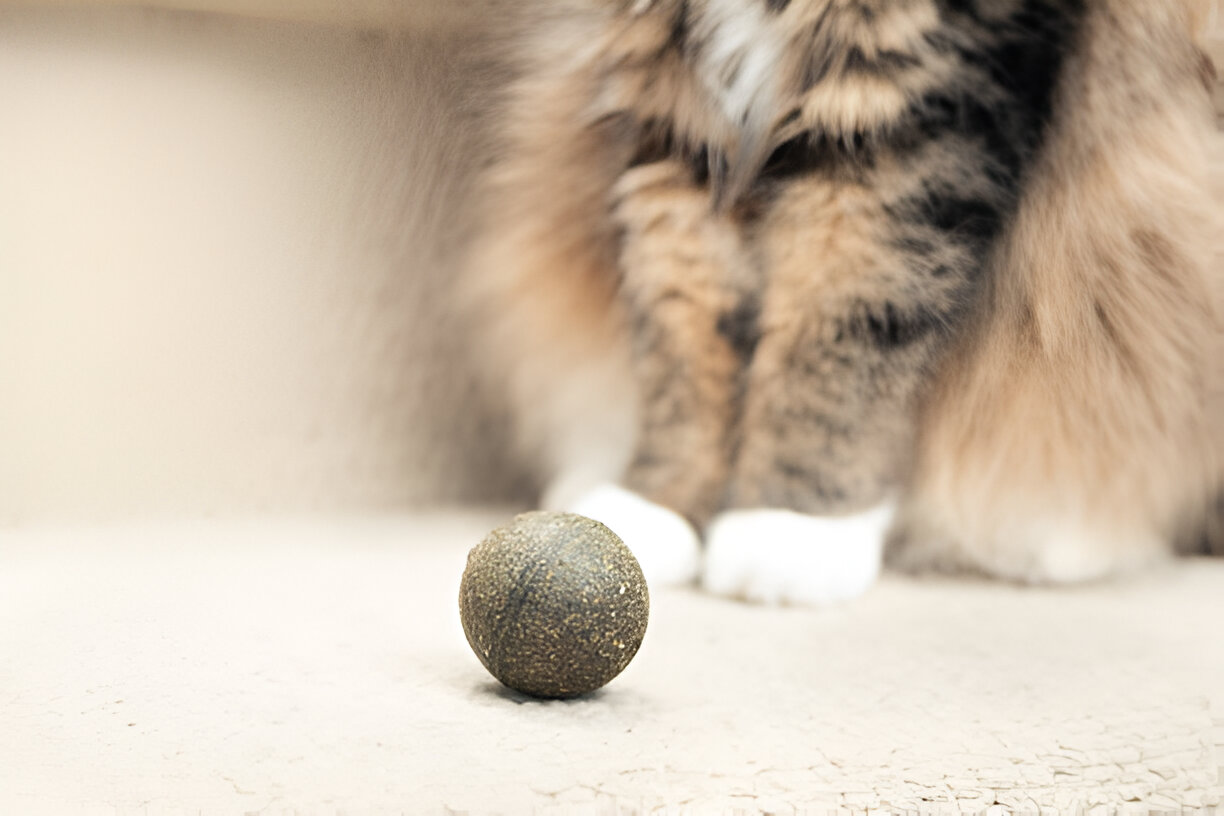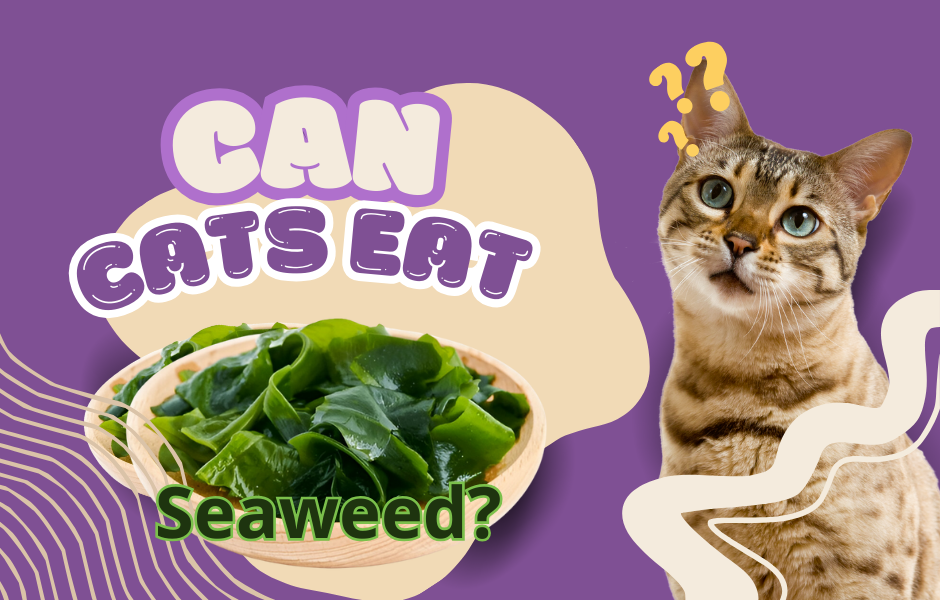What Are Catnip Balls? A Complete Guide for Cat Lovers
Introduction
If you’re a cat owner, you probably have heard of catnip balls. These little, playful toys are a favorite among felines, but what exactly are they?
Catnip balls are compact, often spherical toys filled with dried catnip, a herb that triggers a euphoric response in many cats. In this article, we will cover all you need to know about catnip balls, from their benefits to how to use them effectively. Be a new parent or an experienced expert in parenting a cat; this guide will be able to make you understand why these toys are a must-have for your furry friend.
What Are Catnip Balls?
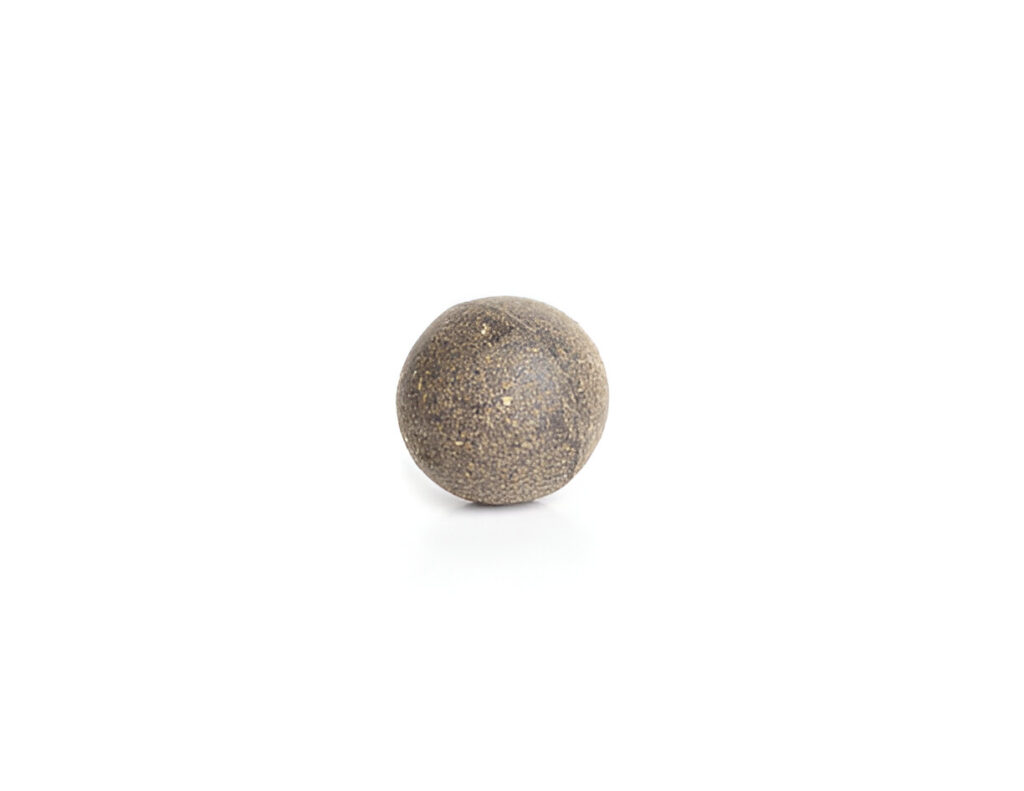
Catnip balls are small, usually interactive toys to entertain cats by stimulating them. These are prepared from durable material, such as felt, fabric, or even rubber, which contains dried leaves of catnip inside. The catnip plant belongs to the mint family, possessing a certain chemical called nepetalactone, which has been found quite appealing to the majority of domestic cats.
Upon exposure to catnip, cats react within a wide span, from rolling to rubbing, purring, and playful aggression. This very property makes the catnip balls an exceptionally good tool for playing with, exercising, and even soothing your cat.
Key Features of Catnip Balls
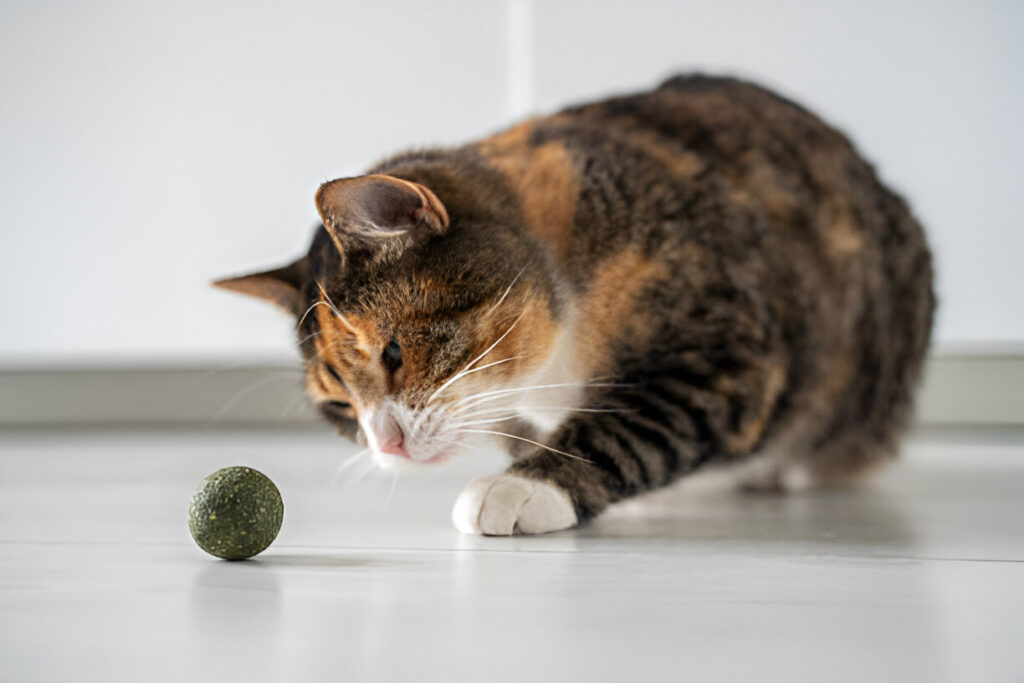
- Compact Size:
Catnip balls are small in size and lightweight, hence easy for cats to bat around, carry, and chase with ease. The size of the catnip is ideal for cats to play with by themselves or during interactive playtime with their owners. - Durable Materials:
These are designed to withstand scratching, biting, and general wear and tear. Common materials will often include reinforced felt, soft fabric, or rubber to make the toy durable for lots of play over time. - Filled with Catnip:
These balls are filled with dried leaves of catnip, which release this smell most cats cannot resist. This would subsequently make the cat activate the toy, engaging them in both physical and mental stimulation. - Variety of Designs:
Smell: Catnip balls come in many shapes, colors, and even smells to meet most of their feline distinctive preferences. Adding to the amusement and temptation are features such as bells, crinkle sounds, or feathers attached to them. - Not Poisonous at All:
The catnip balls are made from non-toxic material and hence are safe for cats to chew, bite, or play with. Always confirm from the description if the product meets the safety standards. - Easy to Clean:
Many catnip balls are designed to be easy to clean, either by wiping them down or tossing them in the washing machine, provided the material allows. This helps maintain hygiene and prolongs the toy’s life. - Budget-Friendly and Replaceable:
They are usually cheap, hence affordable for most cat owners. Cats can get used to a certain toy and may even shred it after some time; this is where their inexpensiveness allows them to be replaced readily.
Benefits to Cats from Catnip Balls
- Keeps Them Exercising: The nature of catnip balls gets your cats playing around, which is a great way to exercise to avoid obesity-related complications.
- Mental Stimulation: The smell of catnip and the interactive nature of the toy help to keep cats mentally stimulated, reducing boredom and related behavioral problems.
- Stress Relief: Catnip has a soothing effect on many cats, which makes these balls an excellent remedy for anxiety or stress, particularly in new environments or during travels.
- Bonding Opportunity: The catnip ball is an excellent means of interacting with your cat and building or strengthening the bond between you and your pet.
How to Use Catnip Balls
- Introduce the Toy: Let your cat have the catnip ball by either rolling it gently on the floor or tossing it near them. Allow your cat to get used to it and start playing with it at their own comfort.
- Supervise Playtime: Generally, catnip balls are safe; however, it is always advisable to supervise your cat during play so that they do not accidentally ingest any part of the toy.
- Rotate Toys: Keep your cat interested by rotating catnip balls with other toys. This prevents them from getting bored with one particular toy.
- Restore the Scent: After some time, the catnip scent will be lost. To revive it, sprinkle on some dried catnip or refill the filling if possible.
How to Choose the Correct Catnip Ball
Each time you go to choose a catnip ball for your feline friend, you need to consider the following:
- Your Cat’s Personal Preferences: Some cats love their toys to be soft and cushy while others like them hard and robust.
- Safety: The toy should be made from non-toxic materials and not contain small parts that might choke the child.
- Quality: Choose durable toys, which are strong enough to withstand rough or violent play in order to avoid replacing them frequently.
Why Do Cats Love Catnip Balls?
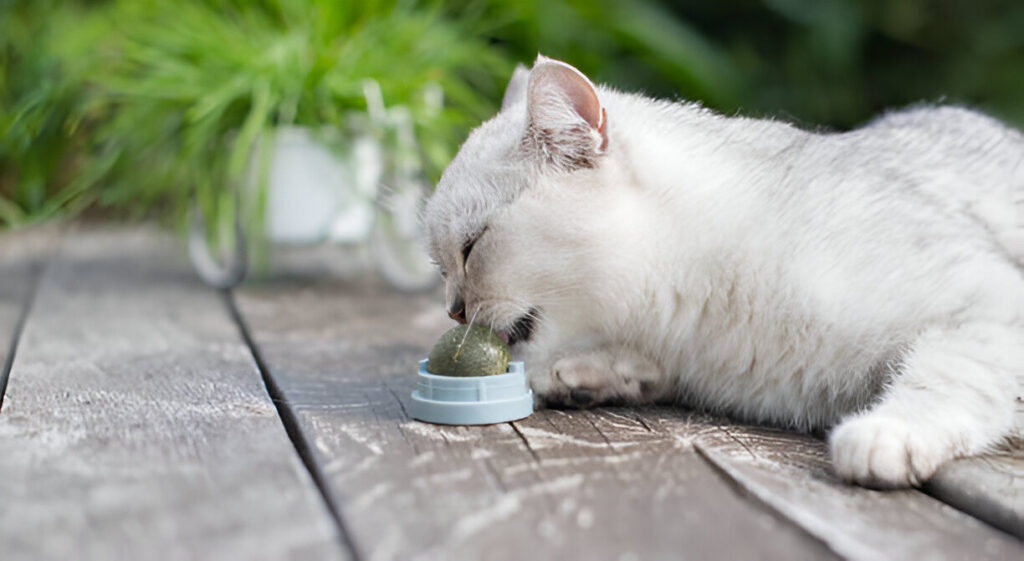
Cats are instinctively attracted to catnip, and catnip balls are a very popular means of delivering this exciting herb to them. The attraction is due to a chemical called nepetalactone, contained in the leaves, stems, and seeds of the catnip plant (Nepeta cataria). Catnip, either in the form of a ball, toy, or loose leaves, acts when nepetalactone binds to receptors in the olfactory epithelium-the tissue inside the nose responsible for detecting smells-of cats.
It instigates a response in their olfactory bulb that then sends signals to the brain, notably to areas associated with behavior and emotion.
Results of nepetalactone may vary between cats; common reactions include:
- Euphoric Behavior: Many cats exhibit a rolling, rubbing, and flipping behavior, all of which are indicative of a feeling pleasurable and exciting.
- Playfulness: With increased activity, cats have been observed pouncing, batting, or even chasing catnip balls as if they were prey.
- Relaxation: Some cats become docile and sedated after the initial burst of energy, lying down and purring contentedly.
- Short-term Obsession: Cats may pay an incredible amount of attention to the catnip ball by sniffing, licking, and even chewing it.
These are believed to be some of the behavioral patterns exhibited during mating or hunting because of the structural resemblance of nepetalactone to some feline pheromones. It is noteworthy, however, that not all cats fall under the influence of catnip-about 30-50% of cats lack this genetic sensitivity to nepetalactone. This also includes kittens and older cats.
Catnip balls are especially appealing because they incorporate the appeal of catnip into the fun of a toy. The shape allows the ball to roll and move in a somewhat unpredictable manner that will stimulate the hunting instincts common in cats. In addition, the smell of nepetalactone is emitted as the cat bats the ball around, therefore creating a multisensory way to keep a cat entertained.
It is important to note that the effects of catnip are temporary, generally lasting about 10-15 minutes, after which cats become temporarily immune to its effects for an hour or more. This prevents overstimulation in cats and allows them to enjoy catnip balls in moderation.
How to Use Catnip Balls Effectively
To get the most out of catnip balls, follow these tips:
1. Introduce Gradually
Not all cats react to catnip immediately. Start by placing the ball near your cat and let them explore it at their own pace.
2. Rotate Toys
To prevent boredom, rotate catnip balls with other toys. This keeps your cat’s interest fresh and exciting.
3. Supervise Playtime
While catnip balls are generally safe, always supervise your cat to ensure they don’t accidentally ingest any parts of the toy.
4. Refresh the Scent
Over time, the scent of catnip may fade. Gently squeeze or roll the ball to release more aroma, or consider replacing it with a new one.
Types of Catnip Balls
Catnip balls come in various shapes, sizes, and designs. Here are some popular options:
1. Standard Catnip Balls
Simple, spherical toys filled with dried catnip. Perfect for batting and rolling.
2. Interactive Catnip Balls
Some balls come with bells or crinkly materials to add extra sensory stimulation.
3. Catnip Ball Kickers
Larger balls designed for cats to kick and wrestle with, often featuring long shapes for easier gripping.
4. DIY Catnip Balls
For crafty pet owners, making your own catnip balls at home can be a fun and cost-effective option.
Are Catnip Balls Safe for Cats?
Catnip balls are generally safe for most cats. However, it’s important to consider the following:
- Quality: Choose toys made from non-toxic, durable materials.
- Size: Ensure the ball is large enough to prevent choking hazards.
- Moderation: Limit playtime to avoid overstimulation.
If your cat shows signs of aggression or excessive hyperactivity, consult your veterinarian.
DIY Catnip Balls: A Fun Project for Cat Owners
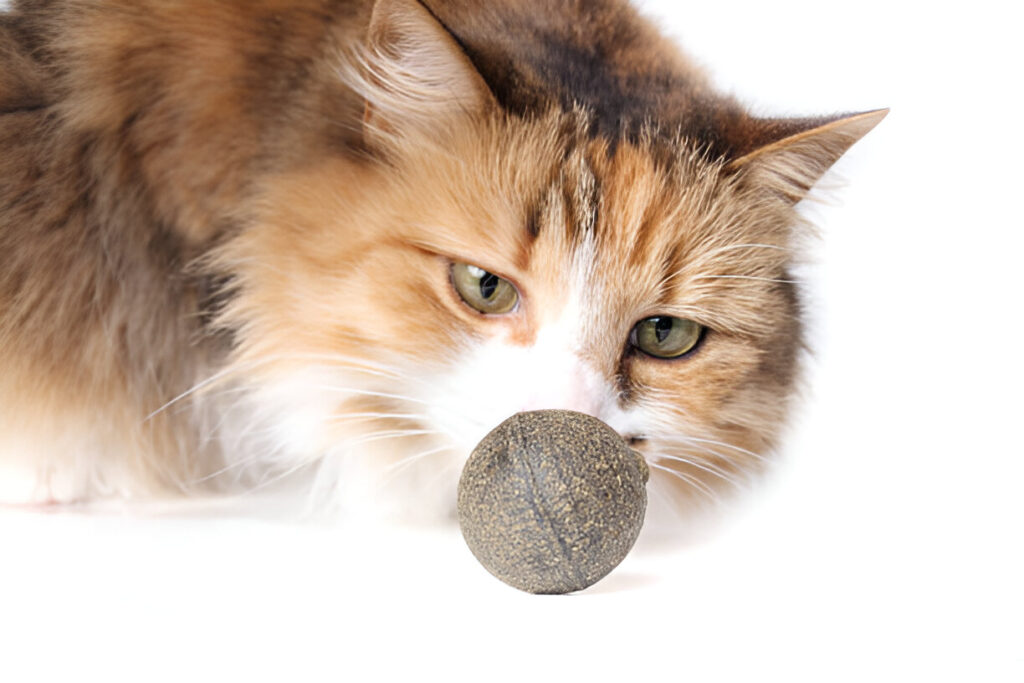
Making your own catnip balls is a simple and rewarding project. Here’s a quick guide:
Materials Needed
- Fabric scraps (felt or cotton)
- Dried catnip
- Needle and thread or fabric glue
- Scissors
Steps
- Cut the fabric into small circles.
- Place a pinch of dried catnip in the center of each circle.
- Gather the edges and secure them with thread or glue.
- Let the balls dry completely before giving them to your cat.
Conclusion
Catnip balls are more than just toys—they’re a gateway to happier, healthier cats. From providing mental stimulation to encouraging physical activity, these little balls pack a big punch. Whether you buy them or make your own, catnip balls are a fantastic addition to your cat’s toy collection.
Have you tried catnip balls with your cat? Share your experiences in the comments below, or explore our related articles on cat toys and enrichment ideas!
Yuns Legdm is a passionate advocate for pet care and the founder of this website, dedicated to providing valuable information for fellow pet lovers and veterinary professionals worldwide. With a deep love for animals, Yuns created this platform to connect passionate pet owners with expert insights from veterinarians around the globe.
This website grows with you—the passionate pet owners and veterinary experts—creating a trusted space where knowledge, experience, and love for animals come together. Whether you’re seeking advice on pet health, nutrition, or general well-being, this platform is here to support you on your journey of responsible and loving pet care.

